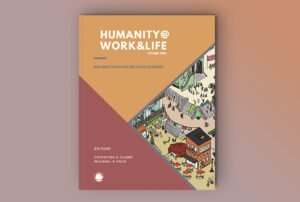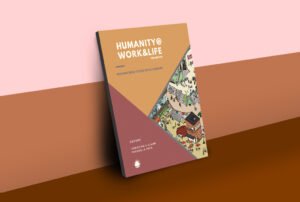
Community development financial institutions (CDFIs) have emerged as pivotal players in bridging financial gaps in underserved communities. Between 2014 and 2024, CDFIs grew sevenfold, reaching $436 billion in assets by the end of 2024.
An executive order (14238)…calls for reducing the CDFI Fund…“to the minimum presence and function required by law.”
This growth has enabled CDFIs to serve a growing number of places, especially residents and business owners in Black and Indigenous communities and communities of color. In particular, CDFIs played a critical role in helping business owners of color access vital Paycheck Protection Program dollars during the pandemic, at a time when conventional banks fell short.
Nonetheless, on March 14, President Donald Trump issued an executive order (14238: “Continuing the Reduction of the Federal Bureaucracy”) that calls for reducing the CDFI Fund (and other entities) “to the minimum presence and function required by law.” What impact this order will have remains unclear. It only took six days for a letter signed by 26 US Senators—half Democrats, half Republicans—to come out publicly in the CDFI sector’s defense.
NPQ covers CDFIs regularly, but in this moment a big-picture view of the role played by CDFIs in the overall economy helps to illustrate what is at stake.
CDFIs Versus Conventional Banks
Unlike conventional banks, which are typically accountable to shareholders, CDFIs are mission-driven institutions accountable to community needs. They often operate as nonprofit loan funds, credit unions, or community-focused banks.
The key distinctions include:
- Purpose and Goals
Conventional banks primarily seek profit by lending to “creditworthy” borrowers. In contrast, CDFIs aim to achieve community development outcomes, such as reducing poverty, increasing homeownership, or stimulating small businesses in distressed areas. They balance financial performance with community impact, often accepting lower returns or longer payback periods if it means greater community benefit.
- Customer Base
CDFIs deliberately target underserved markets. CDFIs fill the gap, for example, by financing first-time homebuyers with limited savings or lending to entrepreneurs of color and/or low incomes without established credit. CDFIs possess an intrinsic understanding of local needs and challenges, enabling financial solutions that are tailored to succeed.
- Underwriting Flexibility
Conventional lenders adhere to standardized credit scores, collateral requirements, and formulas to minimize risk. CDFIs, however, often use flexible underwriting that considers a borrower’s character, community context, or potential for future growth. CDFIs complement these flexible practices with technical assistance—offering coaching in business planning or financial literacy to help ensure borrower success.
- Funding and Incentives
Traditional banks rely on deposits and strive for high returns; they face regulatory pressure to avoid excessive risk. CDFIs have more diverse funding streams, but still manage risk effectively, with loss and delinquency rates similar to conventional lenders. While CDFI banks and credit unions do raise deposits, most CDFIs use a wide variety of funding sources including grants, program-related investments, and low-cost loans from government, foundations, banks, insurance companies, hospitals and other institutional investors.
Key Areas of Impact
CDFIs focus on several critical lending areas where their intervention has an outsized impact. By concentrating on these niches, they drive economic inclusion and community revitalization:
- Rural Mortgages
In rural communities, particularly in regions like Appalachia or the Mississippi Delta, mainstream mortgage lending is often sparse. CDFIs (including many credit unions and housing loan funds) step in to provide rural home mortgages and home improvement loans that keep these communities viable. A case in point is Fahe, a CDFI network in Appalachia, which partners with USDA programs to extend low-interest home loans in remote counties.
- Microloans for Entrepreneurs
CDFIs such as Grameen America are leaders in US microfinance, offering small-dollar business loans (often under $50,000) to nascent entrepreneurs.
- Small-Dollar Consumer Loans
Another area of impact is providing alternatives to payday loans and other predatory lenders.
- Affordable Housing Development
CDFIs play a vital role in financing affordable housing projects, including rental housing, community land trusts, and supportive housing.
- Loans for Cooperatives and Community Facilities
CDFIs often support economic models that conventional lenders overlook, such as cooperative businesses (worker co-ops, food co-ops) or community facilities like daycare centers, health clinics, charter schools, and places of worship.
- Financing for Returning Citizens (Ex-Offenders)
A particularly innovative niche is lending to returning citizens, that is, individuals reentering society after incarceration. CDFIs use character-based lending here as a tool of restorative justice and community safety.
Sign up for our free newsletters
Subscribe to NPQ's newsletters to have our top stories delivered directly to your inbox.
By signing up, you agree to our privacy policy and terms of use, and to receive messages from NPQ and our partners.
- Faith-Based Lending
Some CDFIs are affiliated with faith communities or were founded out of faith-based missions (for example, church-based credit unions). These institutions carry forward values of stewardship and charity into lending.
- Disaster Recovery Loans
When natural disasters strike—hurricanes, floods, wildfires—mainstream banks may close branches or tighten credit as economies destabilize. CDFIs have proven to be financial first responders, moving quickly to offer emergency loans and recovery financing. For example, after Hurricane Katrina in 2005, HOPE Credit Union, which operates throughout the Mississippi Delta region, stepped in with emergency small-dollar loans and expedited account services for displaced residents along the Gulf Coast, at a time when many banks were shuttered.
- Lending to Low-Wealth Borrowers
Essentially, CDFIs act as the on-ramp to the financial mainstream for those whom banks deem unbankable. In doing so, they chip away at systemic inequalities in wealth and opportunity.
Why CDFIs Can Make These Loans: Mission and Margin
Several factors enable CDFIs to succeed in lending where conventional lenders often cannot.
CDFIs possess an intrinsic understanding of local needs and challenges, enabling financial solutions that are tailored to succeed.
- Mission-Driven Patience
As mission-oriented lenders, CDFIs are willing to accept lower profit margins in exchange for greater impact. They often carry patient capital, meaning they are willing to wait longer for returns or tolerate lower returns if the impacts for the community—for example, jobs or housing created—is high.
- Flexible Underwriting and Technical Assistance
CDFIs employ innovative underwriting practices. They look at nontraditional indicators of creditworthiness (rent payment history, reliability, community standing) and often give borrowers a chance to prove themselves. Importantly, CDFIs pair lending with technical assistance (TA)—financial education, business coaching, homebuyer counseling. Because of these supports, CDFIs can lend to higher-risk profiles but manage the risk down through borrower education and engagement.
- Public and Philanthropic Leverage
CDFIs have access to targeted programs and funds that lower their cost of capital, enabling them to make loans with terms a bank typically cannot afford.
- Community Embeddedness
Because CDFIs are often locally based and have a community development mandate, they cultivate a deep understanding of local market conditions and needs. This local knowledge can give them a risk-management edge. They may be aware of informal local support networks, upcoming economic developments, or cultural nuances that inform lending decisions.
Efficiency and Outcomes
CDFIs drive a range of concrete wealth-building and community outcomes. Among these are the following:
- Small Business and Job Creation
CDFI loans help start and expand businesses that create jobs, thus building wealth for entrepreneurs and income for employees. According to Opportunity Finance Network, a leading CDFI trade association, cumulative data through 2022 show that members have financed over 850,000 businesses and microenterprises, helping create or maintain three million jobs.
- Homeownership and Housing Equity
Homeownership is one of the main avenues for middle-class wealth building. CDFIs contribute by financing first-time homebuyers, often through specialized products that require lower down payments or combine with counseling. Through their lending, CDFIs have enabled the production or preservation of nearly 2.4 million affordable housing units (owned or rented) according to OFN data.
- Financial Health and Asset Building
Many CDFIs, especially credit unions, focus on improving consumers’ financial health—offering accounts to the unbanked, helping people build credit, and promoting savings. While it is harder to quantify, these services lead to outcomes like improved credit scores (which open doors to mainstream credit) and emergency savings (which prevent predatory debt).
What Is Next?
In short, CDFIs are pillars of local economic growth and national financial inclusion policy. Every dollar invested in a CDFI generates multiple dollars in community impact, and every successful CDFI borrower is a testament to the potential unleashed when finance serves the many, not just the few.
Evidently, a strong track record is no guarantee that CDFIs will escape unscathed from threatened cuts. But the backing the sector has enjoyed, including from Republicans in Congress, suggests that cuts may prove limited. For example, a memo from the US Department of the Treasury, issued March 21 in response to the administration’s executive order, found that all CDFI programs are backed by existing statutes.
A strong track record is no guarantee that CDFIs will escape unscathed.…But the backing the sector has enjoyed…suggests that cuts may prove limited.
For its part, OFN noted that CDFI loans presently help finance over 4.3 million businesses nationally. In short, it would be difficult for the federal government to enact deep cuts to the sector without adversely affecting small businesses.
While future federal support remains highly uncertain, for fiscal year 2025, the federal allocation for the CDFI Fund is unchanged from the previous year’s level of $324 million, an amount that historically—at least in nominal dollars (that is, unadjusted for inflation)—is equal to the highest funding level ever received.








